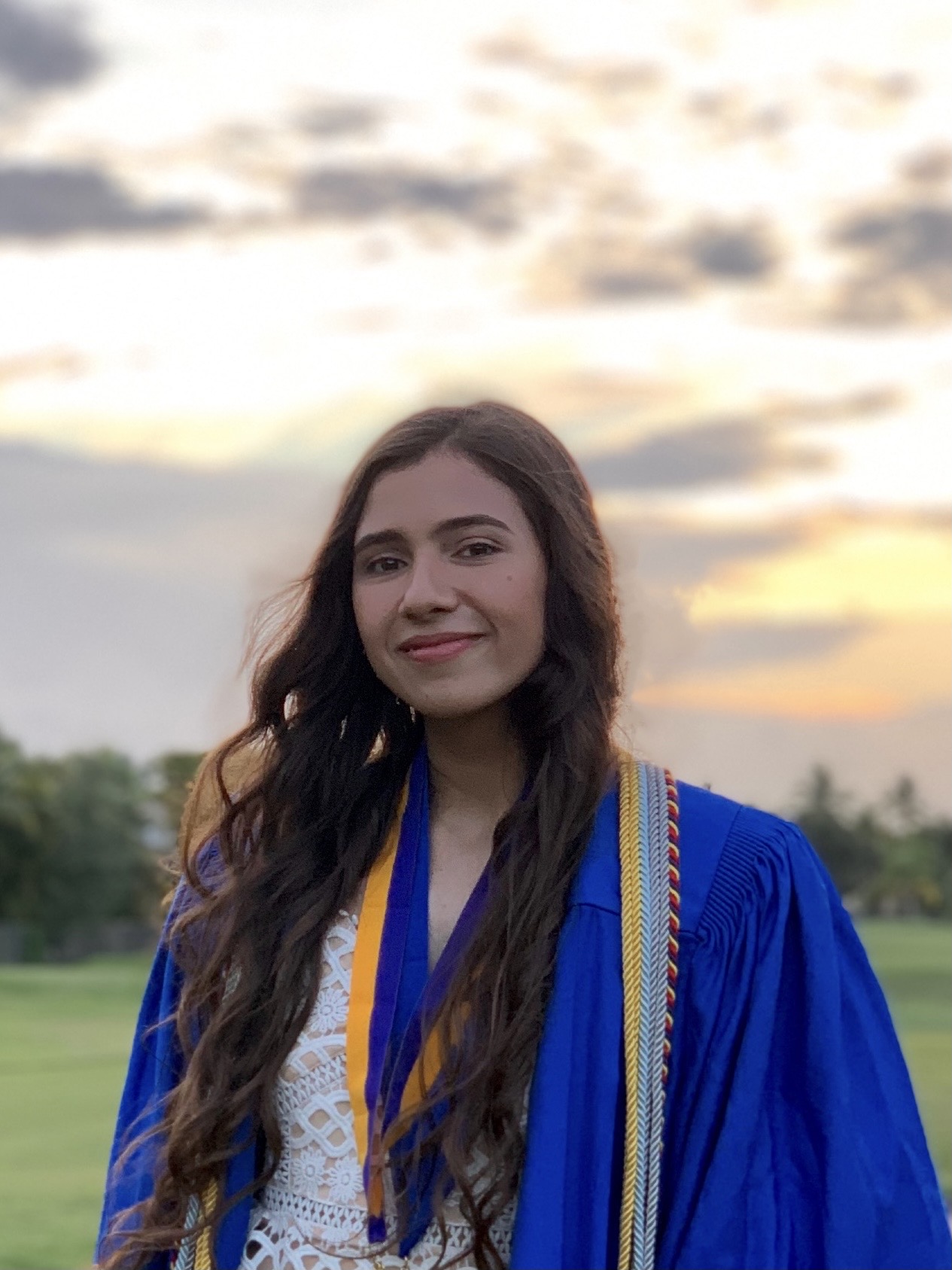Research Symposium
22nd annual Undergraduate Research Symposium
Margaret Rivas Poster Session 7: 3:30-4:15/Poster #31

BIO
I am a passionate computer science and computational biology student interested in the exploration of all biological concepts through the use of computer models. I was born in Venezuela, where the rich fauna and flora and my involvement in the creation of one of the three butterfly gardens in the nation introduced me to my love for biology. I am interested in pursuing a career in data analysis in a biological context to better understand experimental results in research environments, and biological systems and relationships.
Assessing the functional connectivity of adult male green turtles (Chelonia mydas) between an island rookery and coastal foraging grounds
Authors: Margaret Rivas, Josh Cullen, Ph.D.Student Major: Computer Science and Computational Biology
Mentor: Josh Cullen, Ph.D.
Mentor's Department: Earth, Ocean, and Atmospheric Science (EOAS) Mentor's College: College of Arts and Sciences Co-Presenters:
Abstract
Understanding the drivers of marine animal movement is crucial in the effort to mitigate adverse impacts of anthropogenic activities and changing environments on landscape connectivity. Long-distance movement patterns are affected by a number of internal (e.g., navigation, homing) and external factors (e.g., ocean currents, human development) that influence the location of migratory corridors for a given species. It is currently unclear how a combination of ocean currents, the Earth’s geomagnetic field, bathymetric depth, and anthropogenic stressors (fishing effort and carrier-vessel trajectories) can affect the migratory corridors of sea turtles and how this relates to their avoidance of paths that would otherwise be considered ideal (i.e., quickest, most cost-efficient). This study aims to understand how natural and anthropogenic factors affect functional connectivity of green turtles (Chelonia mydas) between an island rookery and coastal foraging ground. We hypothesize that the anthropogenic factors observed will deflect turtles from the least-cost paths available for migration. This study identified migratory periods and utilization of specific corridors for 8 post-breeding adult male green turtles that were satellite-tagged from 2020-2021 at Fernando de Noronha off the coast of Brazil. Turtle locations were processed using a state-space model to account for location error. Fishing effort, carrier-vessel trajectories, and ocean currents’ velocity were mapped and overlaid with turtle tracks to visually observe how these affect movement. These variables will be used to generate a surface of seascape permeability, which will be compared against the empirical turtle tracks to determine if green turtles used the most direct migratory corridors.
Keywords: ecology science biology

